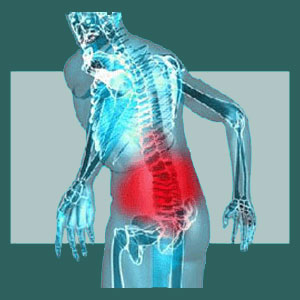
Elderly sacroiliac pain is not a common consequence of advanced aging, but can affect some seniors and potentially create significant functional impairment in older patients. Aging is a cruel process that takes its toll on every anatomical structure and tissue. No part of the body is immune from the consequences of getting older and the sacroiliac joint is certainly no exception to this absolute rule.
The elderly are susceptible to a wide range of health issues, including a diversity of musculoskeletal pain problems. These conditions are most often blamed on age itself, as well as the collateral effects that aging produces in the body, such as degeneration and reduced ability. However, students of chronic pain have made some startling discoveries that have turned this theory upside down, since the elderly demographic does not demonstrate the incidence of pain that one might expect given their advanced age and deteriorated physical condition.
This dialog examines sacroiliac joint symptoms in elderly patients and why current models for causation often do not seem to apply to the senior demographic.
Elderly Sacroiliac Pain Theories
The structural theory of pain states that as a person ages, their body will break down and suffer progressive symptomology in many ways. When it comes to the sacroiliac joint, this theory is widely applied, blaming degeneration, arthritis and ligamentous changes as being virtually universal pathologies and a diversity of other causative theories are being occasional contributors to pain.
There is no doubt that all elders demonstrate marked changes in the sacroiliac joint, although these changes can vary from individual to individual. Some elders demonstrate ligament laxity, especially in women who have had several children earlier in life. All elders will demonstrate arthritic and general degenerative changes in the SI joint which will usually be easy to visualize on medical imaging studies. These changes are often implicated in causing pain.
Some elders will demonstrate specific forms of sacroiliac joint pathology, including sacroiliitis, hypomobility or organic fusion, or the occurrence of a disease process within the joint, such as rheumatoid arthritis, ankylosing spondylitis, gout or Crohn’s disease.
Elderly SIJ Pain Realties
Research and clinical statistics clearly show that elderly people account for a smaller than expected percentage of patients who are suffering with sacroiliac pain, as well as from all musculoskeletal disorders. Given the Cartesian theory of pain, one would certainly expect to find a growing incidence of these conditions in the senior population, but instead, one discovers that the majority of people affected by unresponsive chronic pain are aged between 25 and 55. These years are definitely not the ages when structural degeneration is at their worst, but they are the years of most symptomatic activity in association with virtually all dorsalgia problems.
The elderly might have a history of chronic pain earlier in life, but are rarely burdened by unresponsive symptomatic conditions later on. This is a very interesting finding that certainly supports the mindbody theory of pain far more than the structural, Cartesian theory. After all, early in life, there is tremendous pressure to succeed, provide and perform, while in the senior years, these pressures largely subside.
Elderly Sacroiliac Pain Summary
Senior patients can and do certainly suffer from a variety of sacroiliac joint pathologies. However, these painful conditions account for a significantly smaller number than any medical scholar would expect. Additionally, the response to treatment for sacroiliac joint pain, and all forms of dorsalgia, is much better in the elderly demographic than in younger patients between the ages of 25 and 55 where symptoms often persist despite active care.
Elder patients are sternly cautioned that in many cases, pain may be inaccurately attributed to normal and innocent structural aging and arthritic activity. Therefore, each should be active in their diagnosis and treatment and be sure to seek out more than one opinion on the true cause of pain before agreeing to any form of treatment.
As a final word of guidance, elderly patients are often found to have truly extreme forms of spinal and sacroiliac deterioration that most clinicians would expect to be symptomatic. These conditions may include SI joint degeneration of a severe variety, as well as serious ligamentous dysfunction. Additionally, many seniors will demonstrate a variety of spinal abnormalities including arthritis, disc irregularities, compression fractures, spondylolisthesis and atypical spinal curvatures, yet will not complain of any pain from these changes. This is further evidence that the idea of purely structurally-enacted pain is wholly incomplete and possibly totally off base in many patient profiles.
Sacroiliac Joint Pain > Sacroiliac Facts > Elderly Sacroiliac Pain





